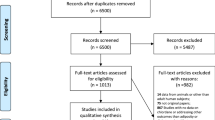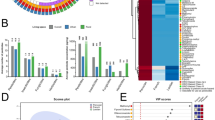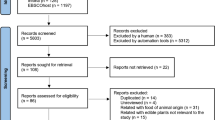Abstract
Organochlorine pesticides are ubiquitously present in the environment and suspected of carcinogenic, neurological and immunological effects. Our objective was to identify determinants of adipose tissue levels of organochlorine pesticides experienced by a general Danish population. Adipose tissue was collected upon enrolment of 245 randomly selected persons from a prospective cohort of 57,053 persons enrolled between 1993 and 1997. We examined geography, gender, age, lactation, body mass index (BMI) and intake of nine dietary groups and tap water drinks, as potential determinants of dichlorodiphenyltrichloroethane (DDT), dichlorodiphenyldichloroethylene, hexachlorocyclohexane, dieldrin, hexachlorobenzene, cis-nonachlor, trans-nonachlor and oxychlordane. Living in Copenhagen city and age at enrolment showed positive associations with all compounds. BMI was positively associated with all compounds except cis-nonachlor. Fatty-fish consumption showed positive associations with cis-nonachlor, trans-nonachlor, DDT and dieldrin and fruit and vegetables were inversely associated with dieldrin. Determinant estimates of trans-nonachlor were similar to estimates of total chlordanes while cis-nonachlor and oxychlordane seemed to differ. This is one of the first studies of organochlorine pesticides predictors in adipose tissue and contributes to the ongoing debate about exposure sources of these compounds. Single determinants varied among the individual compounds, even within related chlordane residues, suggesting that organochlorine pesticides should not be treated as a homogenous group.
This is a preview of subscription content, access via your institution
Access options
Subscribe to this journal
Receive 6 print issues and online access
$259.00 per year
only $43.17 per issue
Buy this article
- Purchase on Springer Link
- Instant access to full article PDF
Prices may be subject to local taxes which are calculated during checkout
Similar content being viewed by others
Abbreviations
- BMI:
-
body mass index
- DDE:
-
dichlorodiphenyldichloroethylene
- DDT:
-
dichlorodiphenyltrichloroethane
- HCB:
-
hexachlorobenzene
- HCH:
-
hexachlorohexane
- LOD:
-
limit of detection
References
Abb M., Breuer J.V., Zeitz C., and Lorenz W. Analysis of pesticides and PCBs in waste wood and house dust. Chemosphere 2010: 81: 488–493.
Ahlborg U.G., Lipworth L., Titus-Ernstoff L., Hsieh C.C., Hanberg A., Baron J., Trichopoulos D., and Adami H.O. Organochlorine compounds in relation to breast cancer, endometrial cancer, and endometriosis: an assessment of the biological and epidemiological evidence. Crit Rev Toxicol 1995: 25: 463–531.
Amternes Videncenter for Jordforurening.Copenhagen DiD. Branchbeskrivelse for skovbruget med fokus på anvendelse af DDT, T & A (Teknik & Administration) Nr. 4, 1988. Ref type: Report 1988.
Anderson H.A. Utilization of adipose tissue biopsy in characterizing human halogenated hydrocarbon exposure. Environ Health Perspect 1985: 60: 127–131.
Archibeque-Engle S.L., Tessari J.D., Winn D.T., Keefe T.J., Nett T.M., and Zheng T. Comparison of organochlorine pesticide and polychlorinated biphenyl residues in human breast adipose tissue and serum. J Toxicol Environ Health 1997: 52: 285–293.
ATSDR. Toxicological Profile for 4,4′-DDT, 4,4′-DDE, 4,4-DDD. Agency for Toxic Substances and Disease Registry, Atlanta, GA, USA, 1992.
Barber J.L., Sweetman A.J., van W.D., and Jones K.C. Hexachlorobenzene in the global environment: emissions, levels, distribution, trends and processes. Sci Total Environ 2005: 349: 1–44.
Bernhoft A., Skaare J.U., Wiig O., Derocher A.E., and Larsen H.J. Possible immunotoxic effects of organochlorines in polar bears (Ursus maritimus) at Svalbard. J Toxicol Environ Health A 2000: 59: 561–574.
Berthouex P.M. A study of the precision of lead measurements at concentrations near the method limit of detection. Water Environ Res 1993: 65: 620–629.
Bilrha H., Roy R., Moreau B., Belles-Isles M., Dewailly E., and Ayotte P. In vitro activation of cord blood mononuclear cells and cytokine production in a remote coastal population exposed to organochlorines and methyl mercury. Environ Health Perspect 2003: 111: 1952–1957.
Blackwood A., Wolff M., Rundle A., Estabrook A., Schnabel F., Mooney L.A., Rivera M., Channing K.M., and Perera F.P. Organochlorine compounds (DDE and PCB) in plasma and breast cyst fluid of women with benign breast disease. Cancer Epidemiol Biomarkers Prev 1998: 7: 579–583.
Bräuner E.V., Mayer P., Gunnarsen L., Vorkamp K., and Raaschou-Nielsen O. Occurrence of organochlorine pesticides in indoor dust. J Environ Monit 2011a: 13 (3): 522–526.
Bräuner E.V., Sørensen M., Gaudreau E., Leblanc A., Eriksson K.T., Tjønneland A., Overvad K., and Raaschou-Nielsen O. A prospective study of organochlorines in adipose tissue and risk of non-Hodgkin's lymphoma. Environ Health Perspect 2011b; e-pub ahead of print 26 August 2011.
Burgess A., and Sweetman H.L. The residual property of DDT as influenced by temperature and moisture. J Econ Entomol 1949: 42: 420–423.
Colt J.S., Lubin J., Camann D., Davis S., Cerhan J., Severson R.K., Cozen W., and Hartge P. Comparison of pesticide levels in carpet dust and self-reported pest treatment practices in four US sites. J Expo Anal Environ Epidemiol 2004: 14: 74–83.
Colt J.S., Severson R.K., Lubin J., Rothman N., Camann D., Davis S., Cerhan J.R., Cozen W., and Hartge P. Organochlorines in carpet dust and non-Hodgkin lymphoma. Epidemiology 2005: 16: 516–525.
Darnerud P.O., Atuma S., Aune M., Bjerselius R., Glynn A., Grawe K.P., and Becker W. Dietary intake estimations of organohalogen contaminants (dioxins, PCB, PBDE and chlorinated pesticides, e.g. DDT) based on Swedish market basket data. Food Chem Toxicol 2006: 44: 1597–1606.
Dewailly E., Ayotte P., Bruneau S., Gingras S., Belles-Isles M., and Roy R. Susceptibility to infections and immune status in Inuit infants exposed to organochlorines. Environ Health Perspect 2000: 108: 205–211.
Frank L. Epidemiology. When an entire country is a cohort. Science 2000: 287: 2398–2399.
Glynn A.W., Granath F., Aune M., Atuma S., Darnerud P.O., Bjerselius R., Vainio H., and Weiderpass E. Organochlorines in Swedish women: determinants of serum concentrations. Environ Health Perspect 2003: 111: 349–355.
Heilmann C., Grandjean P., Weihe P., Nielsen F., and Budtz-Jorgensen E. Reduced antibody responses to vaccinations in children exposed to polychlorinated biphenyls. PLoS Med 2006: 3: e311.
International Agency for Research on Cancer. Overall evaluations of carcinogenicity: an updating of IARC monographs, volumes 1 to 42. International Agency for Research on Cancer: Lyon, France, 1987. Ref type: Report.
Jaga K., and Dharmani C. Global surveillance of DDT and DDE levels in human tissues. Int J Occup Med Environ Health 2003: 16: 7–20.
Kanja L.W., Skaare J.U., Ojwang S.B., and Maitai C.K. A comparison of organochlorine pesticide residues in maternal adipose tissue, maternal blood, cord blood, and human milk from mother/infant pairs. Arch Environ Contam Toxicol 1992: 22: 21–24.
Laden F., Neas L.M., Spiegelman D., Hankinson S.E., Willett W.C., Ireland K., Wolff M.S., and Hunter D.J. Predictors of plasma concentrations of DDE and PCBs in a group of US women. Environ Health Perspect 1999: 107: 75–81.
Lauritsen J. FoodCalc 1.3, 2004: http://www.ibt.ku.dk/jesper/FoodCalc/Default.htm22 March 2004. Ref type: Electronic Citation.
Lavoie E.T., and Grasman K.A. Effects of in ovo exposure to PCBs 126 and 77 on mortality, deformities and post-hatch immune function in chickens. J Toxicol Environ Health A 2007: 70: 547–558.
Longnecker M.P., Rogan W.J., and Lucier G. The human health effects of DDT (dichlorodiphenyltrichloroethane) and PCBS (polychlorinated biphenyls) and an overview of organochlorines in public health. Annu Rev Public Health 1997: 18: 211–244.
McGraw J.E., and Waller D.P. Fish ingestion and congener specific polychlorinated biphenyl and p,p′-dichlorodiphenyldichloroethylene serum concentrations in a great lakes cohort of pregnant African American women. Environ Int 2009: 35: 557–565.
Moysich K.B., Ambrosone C.B., Mendola P., Kostyniak P.J., Greizerstein H.B., Vena J.E., Menezes R.J., Swede H., Shields P.G., and Freudenheim J.L. Exposures associated with serum organochlorine levels among postmenopausal women from western New York State. Am J Ind Med 2002: 41: 102–110.
Quintana P.J., Delfino R.J., Korrick S., Ziogas A., Kutz F.W., Jones E.L., Laden F., and Garshick E. Adipose tissue levels of organochlorine pesticides and polychlorinated biphenyls and risk of non-Hodgkin′s lymphoma. Environ Health Perspect 2004: 112: 854–861.
Repetto R., and Baliga S.S. Pesticides and immunosuppression: the risks to public health. Health Policy Plan 1997: 12: 97–106.
Scientific Panel on Contaminants in the Food Chain EFSA. Chlordane as an undesirable substance in animal feed 2007, 582. Ref type: Report.
Stehr-Green P.A., Farrar J.A., Burse V.W., Royce W.G., and Wohlleb J.C. A survey of measured levels and dietary sources of selected organochlorine pesticide residues and metabolites in human sera from a rural population. Am J Public Health 1988: 78: 828–830.
Stellman S.D., Djordjevic M.V., Muscat J.E., Gong L., Bernstein D., Citron M.L., White A., Kemeny M., Busch E., and Nafziger A.N. Relative abundance of organochlorine pesticides and polychlorinated biphenyls in adipose tissue and serum of women in Long Island, New York. Cancer Epidemiol Biomarkers Prev 1998: 7: 489–496.
Tao S., Xu F.L., Wang X.J., Liu W.X., Gong Z.M., Fang J.Y., Zhu L.Z., and Luo Y.M. Organochlorine pesticides in agricultural soil and vegetables from Tianjin, China. Environ Sci Technol 2005: 39: 2494–2499.
Tjønneland A., Olsen A., Boll K., Stripp C., Christensen J., Engholm G., and Overvad K. Study design, exposure variables, and socioeconomic determinants of participation in diet, cancer and health: a population-based prospective cohort study of 57,053 men and women in Denmark. Scand J Public Health 2007: 35: 432–441.
Tjønneland A., Overvad K., Haraldsdottir J., Bang S., Ewertz M., and Jensen O.M. Validation of a semiquantitative food frequency questionnaire developed in Denmark. Int J Epidemiol 1991: 20: 906–912.
Vaclavik E., Tjønneland A., Stripp C., Overvad K., Philippe W.J., and Raaschou-Nielsen O. Organochlorines in Danish women: predictors of adipose tissue concentrations. Environ Res 2006: 100: 362–370.
WHO. Health Risks of Persistent Organic Pollutants from Long Range Transboundary Air Pollution. World Health Organisation, Regional Office for Europe: Copenhagen, 2003.
WHO. The use of DDT in malaria vector control, WHO position statement, Ref type: Report 2007.
Woodruff T., Wolff M.S., Davis D.L., and Hayward D. Organochlorine exposure estimation in the study of cancer etiology. Environ Res 1994: 65: 132–144.
Acknowledgements
Dr Bräuner was supported by a research grant from The Danish Medical Research Council. This work was also funded by the following Foundations: Danish Cancer Society, Aase and Ejnar Danielsens, King Christian the 10th, A.P. Møller, The Hartmann Brothers, The Foundation of 1870, Snedker Jacobsen and hustru Astrid Jacobsen, Architect Holger Hjortenberg and hustru Dagmar Hjortenberg, Civil Engineer Frode V. Nyegaard and hustru and Simon Spies. None of these foundations had a role in the design of the study, interpretation of the results or writing of the paper.
Author information
Authors and Affiliations
Corresponding author
Ethics declarations
Competing interests
The authors declare no conflict of interest.
Additional information
Supplementary Information accompanies the paper on the Journal of Exposure Science and Environmental Epidemiology website
Supplementary information
Rights and permissions
About this article
Cite this article
Bräuner, E., Raaschou-Nielsen, O., Gaudreau, E. et al. Predictors of adipose tissue concentrations of organochlorine pesticides in a general Danish population. J Expo Sci Environ Epidemiol 22, 52–59 (2012). https://doi.org/10.1038/jes.2011.39
Received:
Accepted:
Published:
Issue Date:
DOI: https://doi.org/10.1038/jes.2011.39
Keywords
This article is cited by
-
Lipogenic Potency of Individual Perfluorinated Alkyl Acids (PFAAs) and Persistent Organic Pollutant (POP) Mixtures at Human Blood-Based Exposure Levels on Adipogenesis in 3T3-L1 Cells
Exposure and Health (2022)
-
A mixture of pesticides at environmental concentrations induces oxidative stress and cholinergic effects in the neotropical fish Rhamdia quelen
Ecotoxicology (2021)
-
Predictors of Beta-Hexachlorocyclohexane blood levels among people living close to a chemical plant and an illegal dumping site
Environmental Health (2020)
-
Assessment of River Water Quality in an Agricultural Region of Brazil Using Biomarkers in a Native Neotropical Fish, Astyanax spp. (Characidae)
Bulletin of Environmental Contamination and Toxicology (2020)
-
Risk of breast cancer and adipose tissue concentrations of polychlorinated biphenyls and organochlorine pesticides: a hospital-based case-control study in Chinese women
Environmental Science and Pollution Research (2019)



